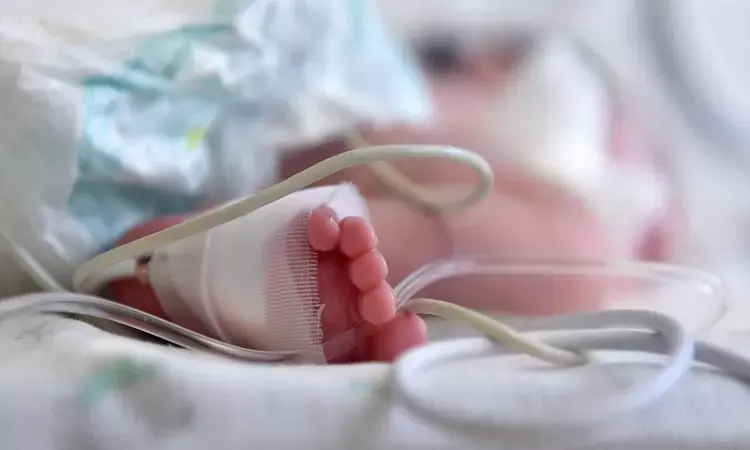- Home
- Medical news & Guidelines
- Anesthesiology
- Cardiology and CTVS
- Critical Care
- Dentistry
- Dermatology
- Diabetes and Endocrinology
- ENT
- Gastroenterology
- Medicine
- Nephrology
- Neurology
- Obstretics-Gynaecology
- Oncology
- Ophthalmology
- Orthopaedics
- Pediatrics-Neonatology
- Psychiatry
- Pulmonology
- Radiology
- Surgery
- Urology
- Laboratory Medicine
- Diet
- Nursing
- Paramedical
- Physiotherapy
- Health news
- Fact Check
- Bone Health Fact Check
- Brain Health Fact Check
- Cancer Related Fact Check
- Child Care Fact Check
- Dental and oral health fact check
- Diabetes and metabolic health fact check
- Diet and Nutrition Fact Check
- Eye and ENT Care Fact Check
- Fitness fact check
- Gut health fact check
- Heart health fact check
- Kidney health fact check
- Medical education fact check
- Men's health fact check
- Respiratory fact check
- Skin and hair care fact check
- Vaccine and Immunization fact check
- Women's health fact check
- AYUSH
- State News
- Andaman and Nicobar Islands
- Andhra Pradesh
- Arunachal Pradesh
- Assam
- Bihar
- Chandigarh
- Chattisgarh
- Dadra and Nagar Haveli
- Daman and Diu
- Delhi
- Goa
- Gujarat
- Haryana
- Himachal Pradesh
- Jammu & Kashmir
- Jharkhand
- Karnataka
- Kerala
- Ladakh
- Lakshadweep
- Madhya Pradesh
- Maharashtra
- Manipur
- Meghalaya
- Mizoram
- Nagaland
- Odisha
- Puducherry
- Punjab
- Rajasthan
- Sikkim
- Tamil Nadu
- Telangana
- Tripura
- Uttar Pradesh
- Uttrakhand
- West Bengal
- Medical Education
- Industry
Hyperoxia tied to adverse outcomes in critically ill children: JAMA

Netherlands: A recent study in JAMA Network Open has found that hyperoxia in critically ill children is associated with mortality despite the methodologic limitations of the studies. The researchers state that there is a need to address the clinical implication of this association in future studies.
The findings support that oxygen may be harmful above a certain dose in PICU (pediatric intensive care unit) children and that it should be supplied with caution.
Oxygen supplementation is the mainstay treatment in pediatric critical care to prevent and resolve cellular hypoxia. Increasing evidence has suggested that the overzealous use of oxygen leading to hyperoxia is related to worse outcomes compared with normoxia patients. Thijs A. Lilien, Pediatric Intensive Care Unit, Emma Children's Hospital, Amsterdam UMC, Amsterdam, the Netherlands, and colleagues, therefore, aimed to evaluate the association of arterial hyperoxia with clinical outcome in critically ill children among studies using varied definitions of hyperoxia.
For this purpose, the researchers conducted a systematic search of the online databases from inception to February 1, 2021. The study included clinical trials or observational studies of children admitted to the PICU that examined hyperoxia, by any definition, and described at least 1 outcome of interest.
The primary outcome was 28-day mortality; this time was converted to mortality at the longest follow-up owing to insufficient studies reporting the initial primary outcome. Secondary outcomes included ventilator-related outcomes, length of stay, extracorporeal organ support, and functional performance.
The systematic review included16 studies involving 27 555 patients. All, except 1 randomized clinical pilot trial, were observational cohort studies.
Following are the salient findings of the study:
- Study populations included were post–cardiac arrest (n = 6), traumatic brain injury (n = 1), extracorporeal membrane oxygenation (n = 2), and general critical care (n = 7).
- Definitions and assessment of hyperoxia differed among included studies.
- Partial pressure of arterial oxygen was most frequently used to define hyperoxia and mainly by categorical cutoff.
- In total, 11 studies (23 204 patients) were pooled for meta-analysis.
- Hyperoxia, by any definition, showed an odds ratio of 1.59 for mortality with substantial between-study heterogeneity. This association was also found in less heterogeneous subsets.
- A signal of harm was observed at higher thresholds of arterial oxygen levels when grouped by definition of hyperoxia.
- Secondary outcomes were inadequate for meta-analysis.
"Our results indicate that despite methodologic limitations of the studies, hyperoxia is related to mortality in critically ill children," wrote the authors. "The finding identified the further requirement for prospective observational studies and important to address the clinical implications of hyperoxia in critically ill children."
Reference:
Lilien TA, Groeneveld NS, van Etten-Jamaludin F, et al. Association of Arterial Hyperoxia With Outcomes in Critically Ill Children: A Systematic Review and Meta-analysis. JAMA Netw Open. 2022;5(1):e2142105. doi:10.1001/jamanetworkopen.2021.42105
Dr Kamal Kant Kohli-MBBS, DTCD- a chest specialist with more than 30 years of practice and a flair for writing clinical articles, Dr Kamal Kant Kohli joined Medical Dialogues as a Chief Editor of Medical News. Besides writing articles, as an editor, he proofreads and verifies all the medical content published on Medical Dialogues including those coming from journals, studies,medical conferences,guidelines etc. Email: drkohli@medicaldialogues.in. Contact no. 011-43720751


